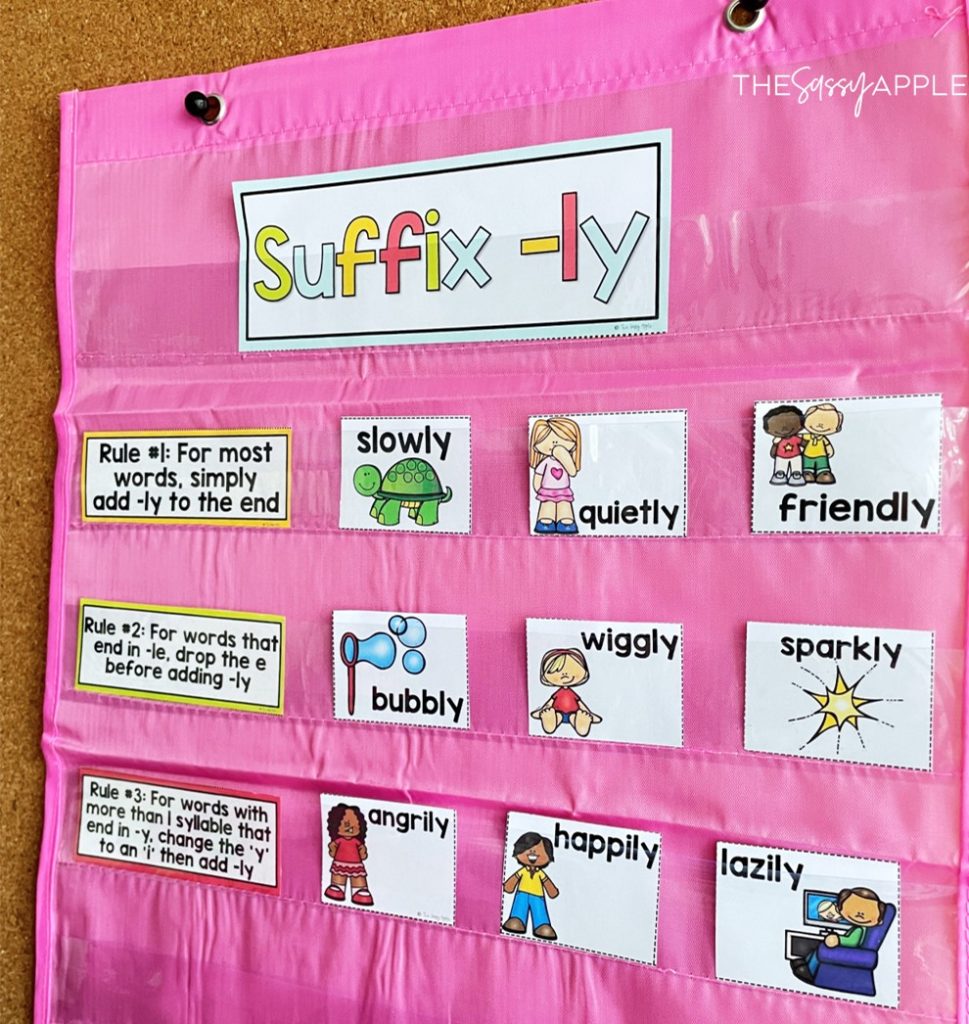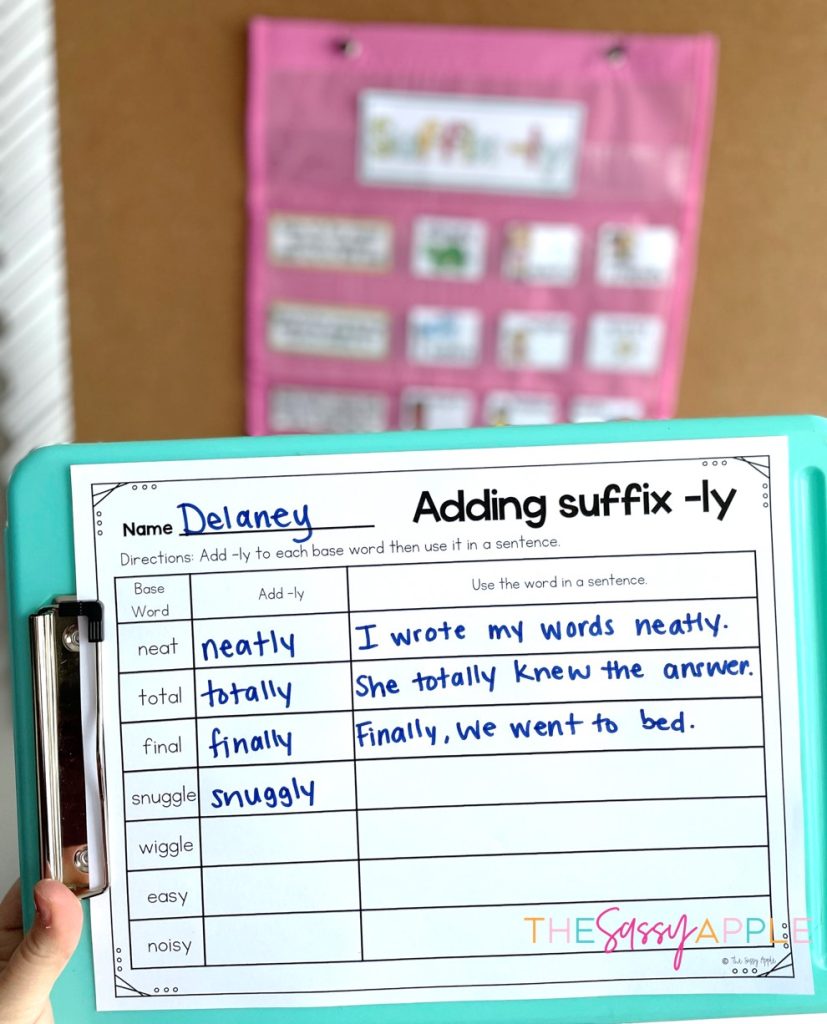Understanding suffixes is a crucial aspect of developing strong language skills. One of the most common and versatile suffixes is -ly. Teaching students how to add suffix -ly to words can enhance their writing, allowing them to express ideas more precisely. In this post, we will explore simple rules, provide examples, and suggest engaging activities to help students grasp the nuances of using -ly.
Suffix -ly Meaning and Rules
Before delving into teaching -ly, it is crucial to understand its function. An adjective is a word that describes a noun, whereas an adverb modifies a verb, adjective, or another adverb. The suffix -ly performs the essential function of turning adjectives into adverbs, allowing writers to express how something is done.
The -ly Rule Explained
The rule for -ly is straightforward: when describing how an action is performed, add -ly to the end of an adjective. This is a golden rule to teach students when honing their understanding of adverbs.
Suffix -ly Word Examples
When teaching any type of suffix, it’s handy to have a list of words readily available.
Concrete examples are invaluable tools for young learners. Below are some adjectives transformed into adverbs with the addition of -ly:
- Quick – Quickly
- Loud – Loudly
- Happy – Happily
- Brave – Bravely
- Polite – Politely
Download this free printable word list to assist in your teaching. It makes a great reference for students to use so they can start incorporating words with suffix -ly into their conversations and writing!

Engaging Suffix -ly Activities
To ensure that your students not only comprehend the rule but can also apply it with confidence, engaging activities are key.
Adverb Hunt
An adverb hunt is a treasure hunt for grammar enthusiasts. Provide students with a list of adjectives and ask them to find or craft sentences where the -ly adverb correctly modifies a verb, adjective, or another adverb.
Example Task:
- Adjective: slow
- Sentence: She walked ___________.
- Adjective: brave
- Sentence: He fought ___________.
Encourage students to be creative in finding or creating sentences which employ -ly adverbs effectively.
Suffix Sort
A suffix sort can be a tactile and visual way for students to distinguish between adjectives and adverbs while successfully creating -ly adverbs.
Activity Steps:
- Prepare flashcards with a mix of adjectives and adverbs.
- Guide students to sort the cards into two piles, ensuring they understand that adding -ly transforms an adjective into an adverb.
Emphasize the importance of the suffix in distinguishing the roles of these words in a sentence.

You can find this low-prep sorting activity here.
Sentence Building
The sentence-building activity is a hands-on approach to affirming -ly usage. By pairing adjectives with -ly adverbs in sentences, students get firsthand practice in word usage and sentence structure.
Example Task:
- Adjective: clear
- Adverb: ___________
- Sentence: She spoke ___________.
By completing such tasks, students can see the direct relation between -ly adverbs and actions in comprehensible, relatable ways.
Writing Prompts
Challenges in the form of writing prompts can take learning beyond the classroom walls. Such exercises encourage creative thinking and practical application of the -ly rule.
Example Writing Prompt:
Write a story where your main character has to solve a mystery. Use at least three -ly adverbs in your story.
By integrating such prompts, teachers can assess both comprehension and creativity. Additionally, students gain more experience in incorporating -ly adverbs into their writing, making the learning process more holistic.
Applying to Text
Once you have taught the rules of suffix -ly, it’s important for students to have the opportunity to read words with -ly in context. Including a decodable reader that focuses on the skill will expose students to many -ly words.

Suffix -ly Worksheets
Identifying, reading, and writing words with suffix -ly will help to reinforce the skill. Worksheets can help gradually build students’ understanding of how to add -ly to words and finding words with -ly. These no prep activities provide a mix of activities to reinforce the concept.

Your students will understand how to add -ly to a base word while practicing reading, writing, and identifying words with suffix -ly through all of these engaging activities! They provide a great variety of practice perfect for independent work or small groups.

Grab this worksheet and more activities for teaching suffix -ly in this resource.
Teaching the -ly suffix doesn’t have to be daunting. By introducing simple rules, providing clear examples, and incorporating engaging activities, educators can make the learning process enjoyable and effective.It is crucial to teach the three rules for adding -ly to words. It also helps to incorporate many different opportunities to read words with -ly in context and write them using dictation and writing prompts. With these activities, your students will confidently read and write words with suffix -ly.
Looking for more vocabulary activities? Check out this blog post.


